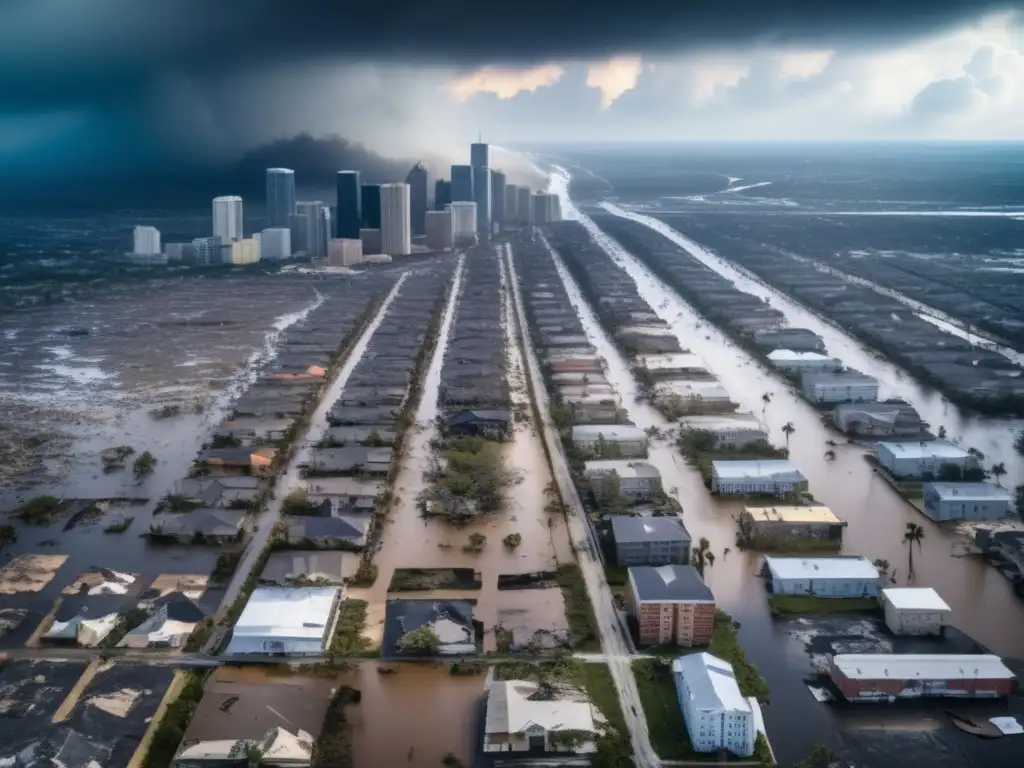Addressing The Emotional Needs Of Pets After A Hurricane

Addressing the Emotional Needs of Pets After a Hurricane
Introduction
As pet owners, our furry friends are part of our family, and their safety and well-being is of utmost importance to us, especially during hurricane season. In the aftermath of hurricanes, pets can experience a range of emotional needs that must be addressed to ensure that they recover from the traumatic event. The purpose of this article is to provide valuable information on how to address the emotional needs of pets after a hurricane.
The Importance of Recognizing Emotional Needs in Pets

The Impact of Hurricanes on Pets
Just as humans can experience fear, anxiety, and stress during and after a hurricane, pets can also experience a range of emotions. During a hurricane, the loud noises and violent winds can cause pets to become frightened and anxious, leading to behaviors such as panting, pacing, shaking, or hiding. Once the storm has passed, pets may continue to experience stress due to the loss of their familiar environment, routines, and the presence of new people and animals in unfamiliar surroundings.
The Signs of Emotional Distress in Pets
It’s important for pet owners to recognize the signs of emotional distress in their pets, which include excessive barking or whining, destructive behavior, loss of appetite, lethargy, and avoiding interaction with their owners or other animals. These symptoms may indicate that your pet is struggling to cope with the emotional trauma of the hurricane, and requires additional care and attention.
The Need for Emotional Support
Just like humans, pets require emotional support to help them through traumatic events like hurricanes. Emotional support may include providing a safe and comfortable environment, providing toys and treats, maintaining a regular feeding and walking schedule, and offering affection and reassurance. It’s also important to allow pets to move at their own pace while adjusting to their new surroundings, and provide opportunities for exercise and play to help reduce stress and anxiety.
How to Address the Emotional Needs of Pets After a Hurricane

Reuniting with Your Pet
If you were separated from your pet during the hurricane, it’s important to locate them as soon as possible. Contact local animal shelters and rescue organizations, and post information about your missing pet on social media and community bulletin boards. Once you have located your pet, take them to a veterinarian for a check-up, and monitor their behavior for signs of emotional distress.
Creating a Safe and Comfortable Environment
After a hurricane, pets may be disoriented and afraid, and in need of a safe and comfortable environment. When returning home, ensure that your home is structurally sound and free of any hazards, such as downed power lines or debris. Provide your pet with their own space, such as a crate or bed, where they can feel secure and comfortable. Place their favorite toys, blankets, and treats in their space, and allow them to explore the rest of the house at their own pace.
Maintaining a Regular Routine
To help your pet adjust to their new environment, maintain a regular routine of feeding, walking, and playtime. Stick to their usual schedule as much as possible, and if necessary, gradually adjust their routine to accommodate your post-hurricane recovery needs. This will help your pet feel more secure and reduce their stress and anxiety.
Offering Comfort and Reassurance
During the aftermath of a hurricane, pets may require additional comfort and reassurance. Spend extra time with your pet, offering cuddles and affection, and engaging in activities that they enjoy. Speak calmly and reassuringly to your pet, and avoid punishing or scolding them for any behavioral issues that may arise due to stress or anxiety.
Frequently Asked Questions

-
How can I locate my missing pet after a hurricane?
Contact local animal shelters and rescue organizations, and post information about your missing pet on social media and community bulletin boards.
-
What should I do if my pet is exhibiting signs of emotional distress?
Take your pet to a veterinarian for a check-up, and monitor their behavior for signs of emotional distress. Provide them with a safe and comfortable environment, maintain a regular routine, and offer comfort and reassurance.
-
How can I help my pet adjust to a new environment?
Maintain a regular routine, provide a safe and comfortable environment, and offer comfort and reassurance.
-
What are the signs of emotional distress in pets?
The signs of emotional distress in pets include excessive barking or whining, destructive behavior, loss of appetite, lethargy, and avoiding interaction with their owners or other animals.
-
How can I reduce stress and anxiety in my pet after a hurricane?
Provide a safe and comfortable environment, maintain a regular routine, offer comfort and reassurance, and provide opportunities for exercise and play.
Conclusion
Addressing the emotional needs of our pets after a hurricane is crucial to their recovery and well-being. Recognizing the signs of emotional distress, offering emotional support, reuniting them with their owners, creating a safe and comfortable environment, maintaining a regular routine, and offering comfort and reassurance can all help to reduce stress and anxiety in our furry friends. As pet owners, it’s our responsibility to ensure that our pets receive the care and attention they need to recover from traumatic events like hurricanes.
For those living in hurricane-prone areas, it’s important to have a plan in place for the safety and well-being of your pets before a hurricane strikes. Consult with your veterinarian, locate pet-friendly shelters, and ensure that you have adequate food, water, and medication for your pets in case of an emergency. By taking proactive measures, we can help ensure that our pets are as safe and well-cared-for as possible during hurricane season.
Additional Resources

For more information on how to care for your pets during and after a hurricane, please visit:
- https://www.ready.gov/pets
- https://www.humanesociety.org/resources/make-disaster-plan-your-pets
- https://www.aspca.org/pet-care/disaster-preparedness
 Public Services: What To Expect From Your Municipality Post-Hurricane
Public Services: What To Expect From Your Municipality Post-Hurricane The Importance Of Self-Care In Post-Hurricane Recovery
The Importance Of Self-Care In Post-Hurricane Recovery The Road To Normalcy: Establishing Routines After A Hurricane
The Road To Normalcy: Establishing Routines After A HurricaneIf you want to discover more articles similar to Addressing The Emotional Needs Of Pets After A Hurricane, you can visit the Hurricane recovery: category.
Leave a Reply

Articulos relacionados: